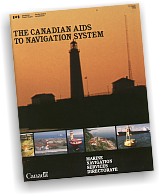|
Sailing Directions contain information on channels
and courses, dangers and obstructions, reefs and shoals, marinas
and local services, navigational aids, weather, rules of the
road and so on. They are produced in Canada by the CHS. Separate
publications cover the Great Lakes, the larger inland waters
and the east and west coasts. Sailing Directions are primarily
for use by commercial vessels but provide much information for
recreational boaters. In the US the equivalent publications are
called Coast Pilots.
Small Craft Guides are specifically for operators
of small boats and contain safety and piloting information for
a given area. They provide detailed navigational and geographical
information, a list of services and facilities available to the
recreational boater, weather broadcast data, and tables of distance,
tidal, and weather information. |


